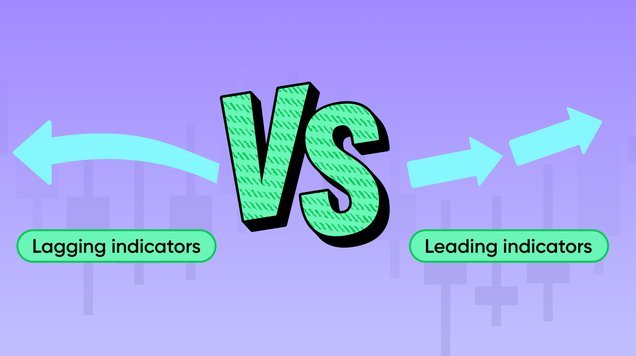Earnings reports
Earnings reports are a fundamental element of stock market analysis that offer investors and traders valuable insights into the future possibilities of publicly traded companies.

Company earnings reports are the single biggest source of accurately audited information about the financial position of the respective company
Key metrics of the report include earnings per share, revenue and profit margin
Earnings reports are typically released during designated periods, known as earnings seasons
Understanding the metrics included in an earnings report can help stock traders and investors to correctly analyse financial assets and for future trades
What are earnings reports?
Earnings reports are comprehensive financial disclosures issued by publicly traded companies at regular intervals, typically every three months, offering a detailed view of the company's financial health.
These reports encompass critical financial statements, including audited balance sheets, income statements, and cash flow statements, as well as essential insights like revenue breakdown and operational metrics.
Their multifaceted purpose is to ensure regulatory compliance, foster transparency, facilitate performance assessment, and serve as a vital means of communication with investors and other key stakeholders.
For traders and investors, these reports offer valuable insights that are at the core of fundamental analysis, and analysing the reports can help them to make more educated decisions in the stock market.
Where do you find earnings reports?
Publicly traded companies generally have a special section on their websites dedicated to investors. This is where they regularly publish earnings reports and other information relevant to their respective investors, as required by financial jurisdiction. If a company does not share their earnings reports, it likely means they are privately owned.
When companies announce their quarterly earnings reports, they share a copy with the exchange where their shares are primarily traded. Investors and traders can also access these earnings reports from the exchange website. For example, Tesla Inc. is listed on the NASDAQ exchange, so investors can also find Tesla earnings report on the NASDAQ website.
Other places that you can find earnings reports include financial news websites, financial market regulators’ websites, financial data providers, online brokerage platforms, corporate earnings websites, public libraries, and earnings calendar websites.
What is an earnings calendar?
An earnings calendar refers to a website, app, or plugin that provides a schedule of upcoming earnings reports for publicly traded companies.
It tells investors the list of companies set to announce earnings reports within a specified time such as a week or month. Most earnings calendars will show the name of the company, date of the earnings release, time of earnings release, earnings estimates, revenue estimates, previous earnings, previous revenues, and top recent news articles talking about the stock.
Earnings calendars are popularly provided by exchange websites, financial markets brokers' websites and apps, financial markets websites, stock screener websites, and financial markets data aggregator websites.
Investors and traders use earnings calendars for research, planning, and risk analysis. Stock prices tend to have relatively higher volatility just before and after the announcement of earnings.
What do investors look for in an earnings report?
An earnings report is a detailed document with lots of financial metrics, statements, graphs, and jargon that may be overwhelming for new-to-market traders or investors. So let’s go into detail.
The top contents of an earnings report are the company’s balance sheet, income statement, and cash flow statement. Investors analyse these statements to extract key decision metrics. Markets tend to react to a small set of the entire earnings document that represents key company metrics.
Here are the top metrics to look for in an earnings report:
Earnings per share (EPS)
Earnings per share refers to the net profit that the company has made over the quarter, divided by the number of outstanding common shares. It represents the profit or loss that the company has made for each share in the period reported.
Investors often compare the reported EPS with the numbers from the previous EPS reports to understand the rate of profitability of the company. Traders will also compare the reported EPS with the company’s projections as well as with analysts' estimates. If earnings beat expectation, the company is doing better than investors thought and shares become more valuable. If earnings decrease, the shares are losing value. If earnings come in as expected, it means that the trend for the share value is in consensus with the prevailing market sentiment.
Revenue
Revenue is the company’s gross income without subtracting any expenses for the period reported. It’s the financial gain from all the services or sales rendered. This demonstrates whether the company is gaining demand for its products or offering in the marketplace.
Investors are interested in knowing whether the company’s revenue is growing or contracting. They also want to know whether the rate of revenue growth is meeting consensus estimates.
Revenue data is also used to make apple-for-apple comparisons between companies in the same industry as well as calculating valuation metrics such as return on invested capital (ROIC). So if a company has higher revenues than its competitor, it means its offering is attracting more interest in that sector.
Profit Margin
Profit margins measure the amount by which the revenue earned in a period exceeds the costs incurred in the same period. It’s calculated as gross profit divided by revenue.
It’s used to assess a company’s profitability, compare different companies’ profitability, analyse profitability trends, assess risks, and evaluate investment opportunities.
There are other margin metrics such as operating margin and net profit margin. Operating margin is calculated by dividing operating profit by revenue. It shows how much profit a company makes on a dollar of sales after subtracting the cost of running its business. Net profit margin, on the other hand, is calculated by dividing net profit by revenue. It looks at the overall company profitability by including other expenses such as tax and interest on outstanding loans.
Earnings guidance or outlook
Though companies are not legally required to report earnings guidance, it has become a common practice for most publicly traded companies to issue projections together with earnings releases.
An earnings guidance is a report that shows detailed projections of a company’s EPS, revenue, profit margin, anticipated company spending, market conditions, revisions, and risk factors for the oncoming quarter, half-year, and/or full year.
Investors often compare previous guidance to the current guidance to assess the trends in the company’s performance. Revision of earnings guidance to the upside often tends to be bullish for stocks, as it shows the company is confident it will be entering a period of growth.
Price to earnings ratio (P/E Ratio)
The price to earnings ratio (or P/E ratio) is sometimes referred to as the earnings multiple or the price multiple. It measures the relative value of a company’s shares by dividing the market value per share by the trailing 12 months (TTM) of total earnings.
In simple terms, the P/E ratio shows the dollar amount that an investor should have invested to make $1 from that company’s earnings over the last 1 year. There are other P/E metrics, such as the forward P/E ratio, that estimates how much an investor would have to invest today to make $1 in a year from now.
The P/E ratio is used to make apple-for-apple comparisons between different companies, benchmark indices, and between different periods in the company’s history.
A relatively high P/E ratio denotes an overvalued company, while a low one denotes an undervalued company. A high P/E ratio may also imply that the company has a great performance, and investors are willing to pay a high premium for its shares to participate in its future earnings. A low P/E ratio may also indicate a dwindling business or represent a drop in demand for their product offering.
Gearing ratio of debt-to-equity (D/E) ratio
This refers to a financial metric that assesses a company's financial leverage and risk by comparing its total debt to its shareholders' equity. It's a measure of the proportion of a company's funding that comes from debt relative to equity.
A company with a relatively high gearing ratio is often considered risky, while one with a low gearing ratio is considered safer. Companies under distress tend to have high D/E ratios, while companies performing exceptionally well tend to have relatively low D/E ratios.
A blanket look at gearing ratios can sometimes be misleading. It’s important to consider a company’s profitability while evaluating its gearing ratio. For example, a highly profitable company may have a high D/E because it is taking on more debt to finance expansion and acquisitions, and thus benefit from lower taxes since interest payments are tax deductible. On the other hand, a barely profitable company becomes riskier as it undertakes more debt especially if the return on equity is lower than the interest rate on debt.
Other metrics
Since companies are unique by nature, they may have unique metrics that communicate their financial position and future potential. For instance, Netflix investors tend to focus on monthly active subscribers, Tesla investors focus on electric vehicle deliveries, Walt Disney investors focus on the performance of new TV shows and movies, etc.
Some common metrics, excluding the ones covered above, extracted from earnings reports include the following: free cash flow, non-performing loans (for banks), acid test ratio, interest coverage ratio, return on assets, return on equity, return on investment, inventory turnover, dividend yield, earnings growth, revenue growth, price-to-sales ratio, price-to-book ratio, current ratio, EBITDA (Earnings Before Interest, Taxes, Depreciation, and Amortization), and CAGR (Compounded Annual Growth Rate).
Earnings call
Shortly after releasing an earnings report, a company’s management team often presents an online session to discuss the financial performance of the company. This conference is known as the earnings call or the earnings conference call.
Companies organise earnings calls to strengthen investor relations. During the conference, attendees are often allowed to raise questions about the economy, market, sector, industry, company performance, company products, risks, and company outlook. This helps paint a clearer picture of the company’s financial position and outlook. When the earnings call is transcribed and published as text on a website, it’s referred to as an earnings transcript.
Investors and traders often react to earnings calls - especially when crucial information is presented that indicate a clear direction in the company’s activities.
The differences between European and American reporting
American companies are subject to the regulations and oversight by the SEC, while European companies are regulated by the IFRS (International Financial Reporting Standards).
While terminologies and practices may differ a little, both American and European earnings reports follow the generally accepted accounting principles (GAAP) or International Financial Reporting Standards (IFRS). For example, European companies refer to a profit and loss statement, while American companies refer to an income statement - both names mean the same thing.
Some European countries require publicly traded companies to prepare earnings reports semi-annually, while American publicly traded companies are required to present earnings reports quarterly.
Another distinction is that European companies are required to present management compensation disclosures in every earnings report while American companies present the information separately in annual proxy statements filed with the US Securities and Exchange Commission (SEC).









